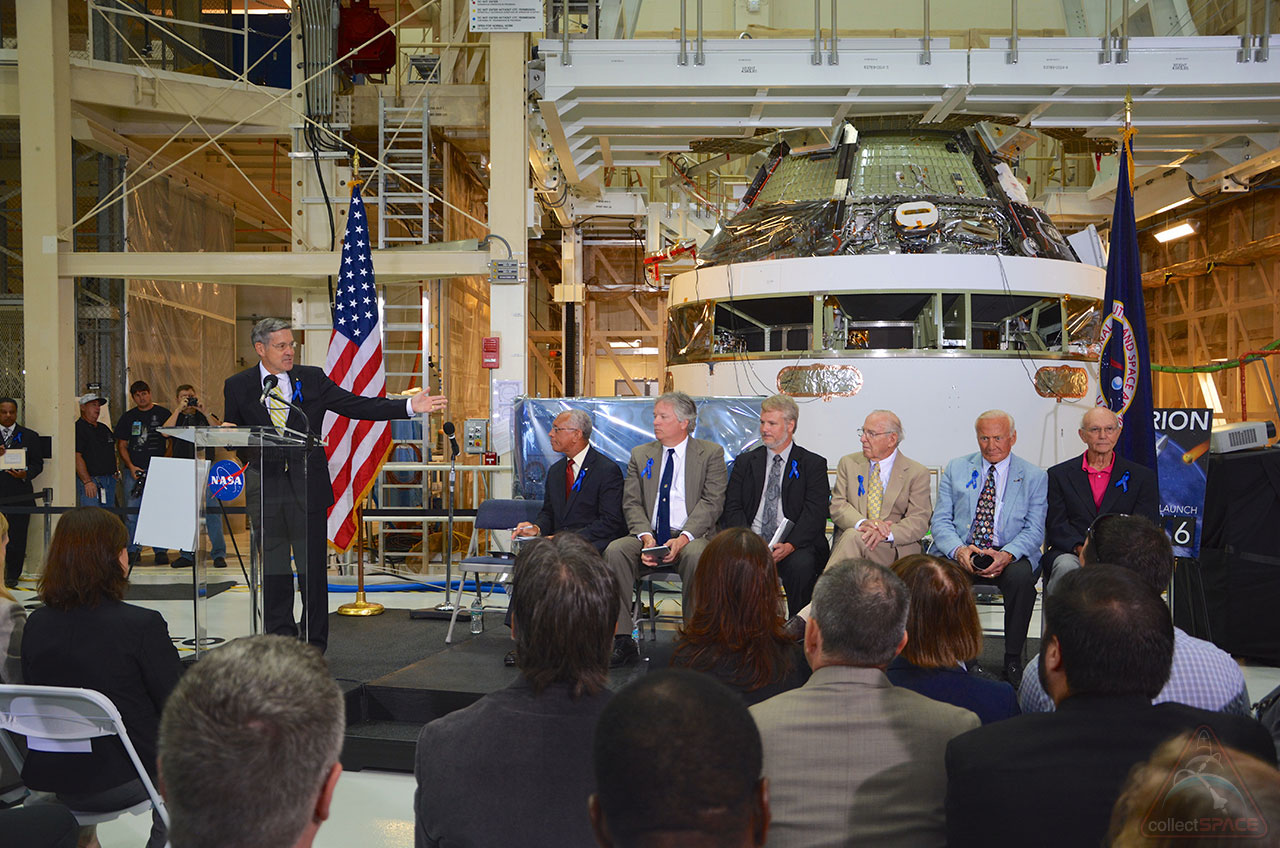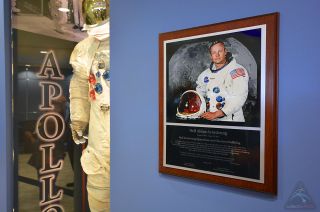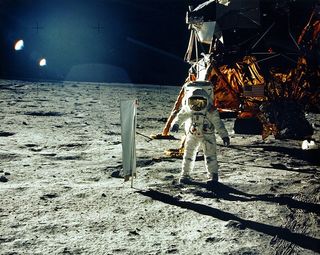NASA Names Historic Operations Building for 1st Moonwalker Neil Armstrong

CAPE CANAVERAL, Fla. — NASA on Monday (July 21) paid tribute to the first man to walk on the moon by naming a building at its Florida spaceport where work is being advanced to send astronauts to Mars.
The "Neil Armstrong Operations and Checkout Building" at NASA's Kennedy Space Center added the late astronaut's name to the historic facility where he, his crew mates and their Apollo 11 spacecraft were readied for a launch to the moon 45 years ago this past week. Today, the building is being used to ready Orion, NASA's next-generation space capsule being developed to send astronauts beyond Earth orbit for the first time since the Apollo lunar landings.
"It is altogether fitting that we rename this facility," NASA Administrator Charles Bolden said during a ceremony held inside the Operations and Checkout (O&C) building, where hundreds of space workers gathered. "Armstrong was not only the first man to set foot on the moon... he challenged all of us to expand the boundaries of the possible."
"He, along with his crew Buzz Aldrin and Michael Collins, are a bridge from NASA's historic journey to the moon 45 years ago, to our path to Mars today." [Apollo 11 Moon Landing at 45: Complete Coverage]

Bolden was joined at the ceremony by Aldrin and Collins, as well as Armstrong's backup commander, James Lovell, and Armstrong's sons Rick and Mark. During the event, Bolden presented Kennedy Space Center director Robert Cabana with an Apollo 11 patch that the astronauts carried to the moon in 1969 and then inscribed for the first crew to fly to Mars.
"We present this patch because it's here where the Mars 1 crew will lift off on America's next bold mission," Bolden stated. "We salute Neil Armstrong and his crewmates for blazing a path that is leading us all the way from the first footprints on the moon to, very soon, the first footprints on Mars."
Armstrong, who famously declared his first small step on the moon a "giant leap for all mankind," died in 2012 at the age of 82.
Get the Space.com Newsletter
Breaking space news, the latest updates on rocket launches, skywatching events and more!
"Neil's spirit lives on in these halls, in our hearts, and now his name will be a constant reminder of where we've been and that in his words 'our opportunities are unlimited,'" Cabana said.
In addition to updating the signs identifying the facility, a plaque and a spacesuit display in the building's lobby also pay tribute to the O&C's new namesake. Mark Armstrong also presented the center with a painting of his father from his days as an astronaut.
"On behalf of the Armstrong family, I would like to thank you for this tremendous honor," Armstrong's youngest son Mark said. "It's our hope the name that graces this facility will inspire those who work here for many years to come."
The five-story-tall O&C building, which was originally titled the Manned Spacecraft Operations Building at its opening in 1964, housed the quarters where the astronauts stayed while at the Kennedy Space Center prior to their launch.
"Since 1965, the Operations and Checkout building has been the final stop for America's astronauts before they embarked on their space journeys," Cabana said. "Like all the others, the crew of Apollo 11 left their mark, not only on the moon, but here in this building."
The building also included the high bay where the Apollo command, service and lunar modules were tested for flight before being stacked atop the Saturn V rocket.
The O&C's crew quarters were used throughout the Apollo program and for the subsequent Skylab, Apollo-Soyuz and space shuttle flights. In the early 1980s, the facility's high bay was used to support the European Spacelab modules that flew on the shuttle.

"I very much like that [Armstrong's] name will be on this building," Collins remarked. "He wouldn't have sought this honor, that was not his style, but I think he would be proud to have his name so closely associated with the heart and the soul of the space business."
"On Neil's behalf, thank you for what you do every day."
Follow collectSPACE.com on Facebook and on Twitter at @collectSPACE. Copyright 2014 collectSPACE.com. All rights reserved.
Join our Space Forums to keep talking space on the latest missions, night sky and more! And if you have a news tip, correction or comment, let us know at: community@space.com.

Robert Pearlman is a space historian, journalist and the founder and editor of collectSPACE.com, a daily news publication and community devoted to space history with a particular focus on how and where space exploration intersects with pop culture. Pearlman is also a contributing writer for Space.com and co-author of "Space Stations: The Art, Science, and Reality of Working in Space” published by Smithsonian Books in 2018.In 2009, he was inducted into the U.S. Space Camp Hall of Fame in Huntsville, Alabama. In 2021, he was honored by the American Astronautical Society with the Ordway Award for Sustained Excellence in Spaceflight History. In 2023, the National Space Club Florida Committee recognized Pearlman with the Kolcum News and Communications Award for excellence in telling the space story along the Space Coast and throughout the world.










